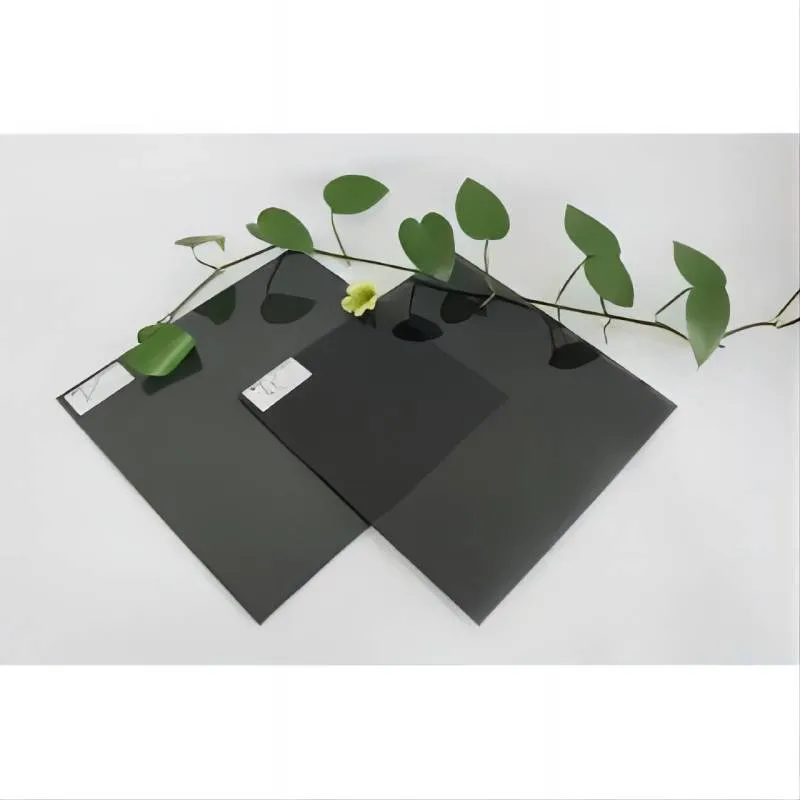Understanding Low-E Tempered Glass Benefits and Applications
Low-E tempered glass, a highly advanced building material, has garnered increasing popularity in modern architecture and construction. This specialized glass integrates technology to enhance energy efficiency and improve overall performance, making it an ideal choice for both residential and commercial applications. In this article, we will explore the characteristics, benefits, and diverse applications of low-E tempered glass, highlighting its significance in today’s construction landscape.
What is Low-E Tempered Glass?
Low-E, or low emissivity glass, is coated with a thin layer of metallic oxide that reflects infrared light while allowing visible light to pass through. This unique property helps to maintain a comfortable indoor environment by minimizing heat loss during the colder months and reducing heat gain in the summer. The term tempered refers to the process of heat-treating the glass to increase its strength and durability, making it more resistant to impact and thermal stress.
Benefits of Low-E Tempered Glass
1. Energy Efficiency One of the primary advantages of low-E tempered glass is its energy efficiency. By reflecting heat back into the building during winter and keeping it outside during summer, this glass effectively reduces the reliance on heating and cooling systems. As a result, property owners can enjoy lower energy bills and a reduced carbon footprint.
2. UV Protection Low-E tempered glass also blocks a significant amount of ultraviolet (UV) radiation. This feature is essential in preserving the integrity of interior furnishings, artwork, and flooring, which can fade or deteriorate under prolonged sunlight exposure. The UV protection ensures that homes and offices maintain their aesthetic appeal over time.
3. Improved Comfort Buildings outfitted with low-E tempered glass tend to maintain a more consistent interior temperature. This stability creates a more comfortable living or working environment by minimizing hot or cold spots near windows. With improved comfort levels, occupants are less likely to rely on heating and cooling systems.
4. Noise Reduction In urban areas or locations near busy roads, low-E tempered glass can also aid in noise reduction. The thickness and tempered nature of the glass dampen sound transmission, contributing to a quieter indoor atmosphere.
low e tempered glass
5. Safety and Security Tempered glass is four to five times stronger than conventional glass. In the event of breakage, it breaks into small, blunt pieces rather than sharp shards, reducing the risk of injury. This safety feature makes low-E tempered glass an ideal choice for homes with children or in high-traffic areas.
Applications of Low-E Tempered Glass
Low-E tempered glass is extremely versatile and can be used in a variety of applications
- Residential Buildings Homeowners increasingly choose low-E tempered glass for windows, sliding doors, and even shower enclosures. Its energy-saving properties and aesthetic appeal make it a sought-after choice for modern homes.
- Commercial Buildings In commercial architecture, low-E tempered glass is commonly used for storefronts, office buildings, and high-rise constructions. These structures benefit not only from the glass's energy efficiency but also from its professional appearance and enhanced durability.
- Skylights and Canopies The use of low-E tempered glass in skylights and canopies allows natural light to flood into spaces while controlling heat gain and loss. This feature enhances the ambiance of commercial and residential spaces alike.
- Curtain Walls In contemporary architecture, curtain walls constructed with low-E tempered glass provide a sleek and modern look. These walls allow for expansive views while maintaining energy efficiency.
Conclusion
In conclusion, low-E tempered glass represents a significant advancement in building materials, providing numerous benefits that enhance energy efficiency, safety, and comfort. Its diverse applications in residential and commercial settings demonstrate its importance in modern construction practices. As the world moves towards more sustainable and efficient building solutions, low-E tempered glass will undoubtedly play a vital role in shaping the future of architecture. Embracing this technology not only enhances the livability of spaces but also contributes positively to the environment.
 Afrikaans
Afrikaans  Albanian
Albanian  Amharic
Amharic  Arabic
Arabic  Armenian
Armenian  Azerbaijani
Azerbaijani  Basque
Basque  Belarusian
Belarusian  Bengali
Bengali  Bosnian
Bosnian  Bulgarian
Bulgarian  Catalan
Catalan  Cebuano
Cebuano  Corsican
Corsican  Croatian
Croatian  Czech
Czech  Danish
Danish  Dutch
Dutch  English
English  Esperanto
Esperanto  Estonian
Estonian  Finnish
Finnish  French
French  Frisian
Frisian  Galician
Galician  Georgian
Georgian  German
German  Greek
Greek  Gujarati
Gujarati  Haitian Creole
Haitian Creole  hausa
hausa  hawaiian
hawaiian  Hebrew
Hebrew  Hindi
Hindi  Miao
Miao  Hungarian
Hungarian  Icelandic
Icelandic  igbo
igbo  Indonesian
Indonesian  irish
irish  Italian
Italian  Japanese
Japanese  Javanese
Javanese  Kannada
Kannada  kazakh
kazakh  Khmer
Khmer  Rwandese
Rwandese  Korean
Korean  Kurdish
Kurdish  Kyrgyz
Kyrgyz  Lao
Lao  Latin
Latin  Latvian
Latvian  Lithuanian
Lithuanian  Luxembourgish
Luxembourgish  Macedonian
Macedonian  Malgashi
Malgashi  Malay
Malay  Malayalam
Malayalam  Maltese
Maltese  Maori
Maori  Marathi
Marathi  Mongolian
Mongolian  Myanmar
Myanmar  Nepali
Nepali  Norwegian
Norwegian  Norwegian
Norwegian  Occitan
Occitan  Pashto
Pashto  Persian
Persian  Polish
Polish  Portuguese
Portuguese  Punjabi
Punjabi  Romanian
Romanian  Russian
Russian  Samoan
Samoan  Scottish Gaelic
Scottish Gaelic  Serbian
Serbian  Sesotho
Sesotho  Shona
Shona  Sindhi
Sindhi  Sinhala
Sinhala  Slovak
Slovak  Slovenian
Slovenian  Somali
Somali  Spanish
Spanish  Sundanese
Sundanese  Swahili
Swahili  Swedish
Swedish  Tagalog
Tagalog  Tajik
Tajik  Tamil
Tamil  Tatar
Tatar  Telugu
Telugu  Thai
Thai  Turkish
Turkish  Turkmen
Turkmen  Ukrainian
Ukrainian  Urdu
Urdu  Uighur
Uighur  Uzbek
Uzbek  Vietnamese
Vietnamese  Welsh
Welsh  Bantu
Bantu  Yiddish
Yiddish  Yoruba
Yoruba  Zulu
Zulu 

